What does business content mean? Business content isn’t just random articles; it’s planned content that guides visitors through the marketing funnel and the customer experience. If done well, it captures people’s interest, establishes trust, and motivates them to take action, ultimately turning visitors into devoted customers.

Here are some samples of popular business content that you can utilize, along with short descriptions of each:
- Prelanders are small landing pages that prepare leads for the main offer.
- Case studies are real-life examples of how your product works and how it has helped others.
- Checklists are fast, useful instructions that help people handle difficulties.
- Email sequences are a step-by-step approach to email marketing that helps prospects grow.
- YouTube explainer videos are brief videos that make hard-to-understand concepts easier to understand.
- User-generated content (UGC) is stuff that your consumers or community make.
- Blog posts are pieces that teach and delight your readers.
- Landing pages are specific pages made to turn visitors into leads or sales.
When you write business content, make sure it is clear, focused on the audience, and professional. Keep a tone that is friendly to compliance if you need to. Remember that each article is an asset, not just a “post,” and it helps with measurable growth, better conversions, and higher ROI.
Different Kinds Of Business Content
When planning business content marketing, you need to know which formats will help you reach your goals, stay within your budget, and appeal to your audience. The correct sorts of content marketing depend on how fast they are, how much they cost, how well they follow the rules, and how easy it is to share or link to your content.

Formats:
1. Blog postings are more than just words on a website. You can use them to chat with your readers, explain concepts that are hard to understand, and assist those who are experiencing real problems. They work best when you want to answer common queries, teach them something, or gently persuade them to buy something.
- A snappy title and a quick intro are usually the first things you see in an article.
- Then it moves on to the main part, which could include comparisons or guides.
- And finally, it closes with a subtle call to action.
You can see how well it’s performing by looking at things like traffic, engagement (likes, comments, and shares), leads, and conversions. If you’d like to see how professionals turn blog content into a steady income stream, check out the full Aivix article — it breaks down proven strategies and examples that actually work. Blog posts that follow the rules of the industry and the law and are clear, correct, and not too overhyped are some of the best instances of marketing.

2. Infographics are more than simply nice illustrations; they may help you get links, share information, and reuse content from your old posts. They are great for making complicated data simple to grasp, drawing attention to survey results, or making something that people would share and use.
- Start with a headline that is easy to read and makes sense, and then explain what the infographic is about.
- Then use clear data visualizations like charts, graphs, or pictures to display the important data points. These should be easy to understand at a glance.
- Lastly, include sources or polls to make your point more believable and, if appropriate, a discreet call to action.
Shares, backlinks, website views, and engagement are all good ways to tell if something is working. Some of the finest ways to develop authority and get attention online are to use infographics that are factual, easy to read, and based on real surveys.
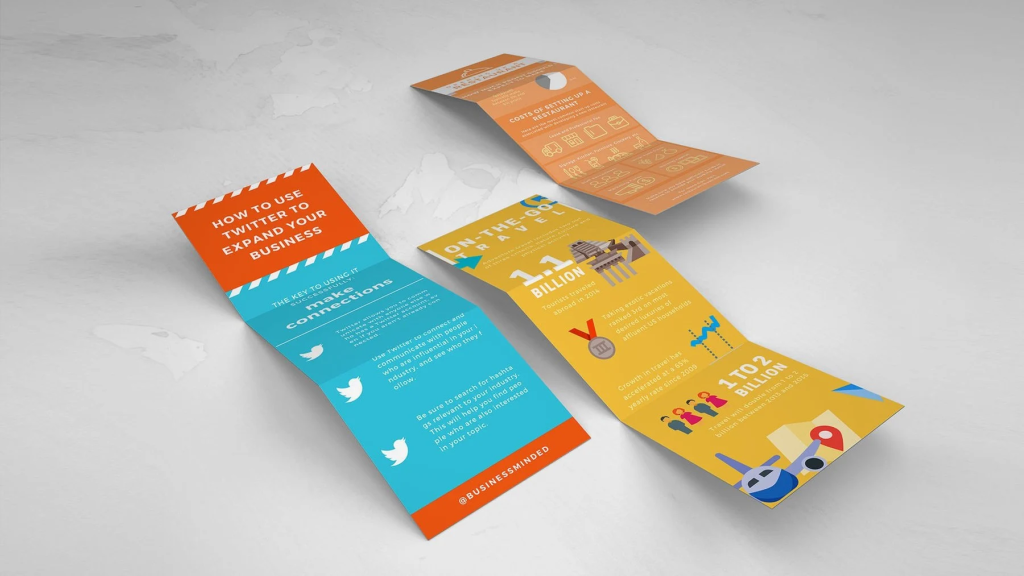
3. Videos are more than just moving pictures; they’re a fun way to explain things, show how things function, and engage with your audience. They are ideal for breaking down hard-to-understand topics, generating fun YouTube marketing videos, or using short clips to get people to come back to your business.
- Start with a hook that grabs people’s attention in the first few seconds.
- Then, explain the problem and your answer in full, using illustrations and examples that make it easier to understand.
- End with a courteous request that advises them what to do next.
The number of views, watch time, interactions, click-throughs, and new subscribers can tell you if you’re doing well. Making well-made videos that follow the best practices for marketing on YouTube is one of the finest ways to instruct, entertain, and convert your audience.
4. Email marketing is more than just sending messages; it’s also a means to build relationships, warm up leads, and maintain your domain’s health. When you want to lead prospects through a process, provide them with useful recommendations, or remind them about your products or services, it works best.
- A subject line that makes readers want to open the email is a good place to start.
- Then provide your audience with brief, easy-to-digest chunks of information, such as short advice, updates, or microcontent that adds value.
- Finish with a clear call to action that tells the reader what to do next, such as going to a page, joining up, or buying something.
You can tell if you’re successful by looking at open rates, click-through rates, engagement, and conversions. Email marketing programs that are well-planned, respect subscribers, and give them value are some of the best ways to create trust and get results.

5. Testimonials and case studies are more than just stories; they illustrate that your product or service works in the real world. They work best when you want to show results, build trust, and make people who might buy from you feel good about their decision.
- Start by talking about the problem or obstacle that the customer had.
- Then, illustrate how your solution worked by offering results from before and after or by illustrating how things got better.
- Include quotes, testimonials, and reviews to make it more real and trustworthy. End with a gentle call to action.
Tracking leads, conversions, engagement, and social shares can help you see how well you’re doing. One of the finest methods to show value and develop confidence in your marketing is to use case studies and testimonials that are well thought out.

6. Podcasts are more than simply audio shows; they can help you create authority, share insights, and engage with your audience on a deeper level. They are great for establishing yourself as a thought leader, getting into themes that interest your audience, or turning old information into short snippets for social media.
- Begin with a concise introduction that grabs people’s attention.
- Then have a talk, an interview, or a debate that gives you useful information and ideas that you can use.
- End with a pleasant call to action or next steps for your audience.
You can tell if you’re successful by how many people download, listen to, engage with, and subscribe to your content. Podcasts that are well-made are a great way to develop trust and keep your audience coming back for more.
7. Whitepapers and eBooks (B2B) aren’t simply long reads; they’re also great ways to get high-quality leads and teach your audience. They are great when you want to give people in-depth knowledge, solve hard problems, or give them useful resources that require them to give you their contact information.
- Start with a crisp executive summary that tells readers what they will learn.
- Then get into the primary material by giving in-depth analysis, data, and real-world examples.
- End with a call to action that gets them to download or become more involved.
You can tell if you’re doing well by keeping track of downloads, form completions, and the quality of your leads. Well-written whitepapers and eBooks are some of the best ways to market B2B technologies since they help you create authority and see real results.
8. Online courses and webinars are more than just live classes or discussions. They are an excellent method of reaching valuable prospects while also educating your audience. They work well when you want to demonstrate your expertise, go into great detail about something, or provide potential customers with additional information to help them make a decision.
- Start with a concise introduction that informs the audience of the main points of the presentation.
- Then, use live Q&A sessions, how-to videos, or demos to keep people engaged and interested.
- Finish with a kind call to action that instructs readers on what to do next, such as registering, making a purchase, or finding out more.
How many people sign up, how many show up, how involved they are, and how many of them become customers are all indicators of how well you’re doing. When done correctly, webinars are one of the greatest ways to educate, foster trust, and develop high-value leads.

9. Calculators and interactives are not only fun to use, but they are also wonderful ways to get people engaged and obtain leads that can be measured. When you want users to actively look at their options, figure out their return on investment (ROI), or understand how things might turn out in a hands-on way, they are wonderful.
- Start with a simple, clean, and easy-to-use interface.
- Let them enter data and get the results straight away. This will make the experience both fun and useful.
- Finish with a simple call to action that invites people to save their results, share them, or go on to the next thing.
You can tell if something was successful by how many people interacted with it, shared it, got leads from it, and talked about it. One of the most linkable assets for getting people to interact with your material and deliver them real value is well-made interactive content.
10. Social media and user-generated content (UGC) aren’t just places to post; they’re also great ways to connect with your audience, build a community, and show real social proof. They are best for sharing content in its original form, showing off your customers’ experiences, or getting people to talk and interact.
- Begin with content that is appropriate for the platform, such as a story, post, or video.
- Use real user-generated content (UGC) to show real experiences and earn trust.
- End with a friendly call to action that asks people to like, share, comment, or do something else.
You can tell if you’re doing well by keeping track of likes, shares, comments, engagement, and conversions. One of the best ways to build trust, connect with your audience, and boost brand credibility is to run well-planned social media campaigns that give user-generated content (UGC).

When you carefully prepare your business content and choose formats that fit your aims, you make sure that every piece helps your company grow in the long run, keeps your audience interested, and increases ROI.
Business Content Strategy (Step-by-Step)
In the rest of this article, we’ll walk you through seven practical steps that every business owner can follow to create a content marketing strategy that actually works for a small business.

1. Start a blog
One of the easiest and cheapest ways to build a strong business content strategy, show off your skills, and become a trusted voice in your field is to start a blog. A good content strategy doesn’t just bring in visitors; it also helps them move through the marketing funnel and supports every step of the customer journey.
According to research, having 21 to 54 posts on your site can boost traffic by as much as 30%. A strong blog as part of your content marketing strategy does more than just get clicks; it can also:
- Improve your overall SEO and your search engine rankings
- Give your audience useful information and insights.
- Get your brand more exposure and reach
- Get more leads and make more sales.
If you have the right content strategy, your blog can be a great way to support your overall content marketing strategy and turn visitors into loyal customers.
2. Make a social media presence where your audience actually spends time.
If you sell something, you probably already have some type of social media presence. But merely having an account isn’t enough. To make a difference, you need to leverage the platforms that your audience actually uses. A good content strategy helps you figure out where and how to share material that really speaks to your target audience.
So, how can you know which channels are best for your brand? The first thing you need to do is figure out who your target audience is. You’re not attempting to reach everyone on social media; you’re talking to a certain group of individuals who are interested in what you have to say. After that, you need to find out where they spend their time online.
Here are some useful approaches to find out:
- Look at all the data you have about your customers to determine which platforms they use the most.
- Look at your competitors’ social media pages to see where they get the most interaction.
- Use Google Analytics and other tools to keep an eye on how people act and what they do online.
These steps will help you find the social media channels where your audience is active so you can send them material that they will really see and connect with.

3. Start a newsletter by email
One of the easiest ways for small businesses to get into email marketing and support a larger content strategy is to start an email newsletter. Newsletters let your audience know about new products, upcoming events, industry news, and other important things that are going on with your business.
Email marketing is well-known for giving great returns. On average, every dollar spent can bring back about $42. Newsletters are an important part of a good content marketing strategy for small businesses, and they do more than just bring in money.
- Gain the trust and goodwill of their audience
- Promote sales, special offers, or deals that are only available to you.
- Keep people interested to increase the value of each customer over time.
A well-planned newsletter does more than just give information; it keeps your audience connected, builds relationships, and pushes them to do something important.
4. Make content that fits with your customer’s sales funnel
If you want people to buy something, you need to give them the right information at the right time. You can find out where your potential customers are in their journey and give them content that meets their needs by using a clear content strategy and a simple customer sales funnel.
Using topic clusters and content hubs is one good way to do this. Putting related content around a central pillar page not only makes it easier for people to find their way around, but it also helps your SEO by guiding readers through your content in a structured way.
A marketing funnel shows the steps people take from learning about your brand to making a purchase. There are four main steps in most funnels:
- Attention: A potential customer sees your ad, posts on social media, or hears about you from someone else.
- Interest: They want to know more about your brand or product.
- Desire: They want to do something or buy something.
- Action: They do something, like buy something, sign up for a newsletter, or take another important action.
Make sure that the content you make is appropriate for the stage your audience is in. Someone in the attention phase, for instance, shouldn’t be given a long, technical guide that goes into too much detail. Instead, give them something easy to understand that makes them want to learn more. You can do this by using well-organized topic clusters and content hubs that are built around your pillar page.
5. Plan out when you’ll post your material
It’s important to always give people great content, but it’s also important to make it. Once you know who your customers are and where they are in the buying process, you can construct a content calendar to make sure they always get important information.
Make a monthly schedule that includes blog posts, updates on social media, emails, and any other material you wish to provide. That way, you won’t have to hurry to post at the last minute.
Not only does a content calendar help you keep organized, but it also helps your audience know what to expect, builds trust, and makes them more familiar with your brand over time. When your content strategy makes sure that the right people see your content regularly, it’s easier to create relationships and help people.
6. Make Different Types of Content
In today’s crowded market, it’s important to stand out, and a clever content marketing plan can help your small business do that.
Look at your own material and the work of your competitors to get started. Pay attention to what people like and what they don’t. You can use what you’ve learned about what works to make your next piece of content successful.
Then use your imagination. Don’t let what has already been done hold you back. Make an infographic out of your most recent blog article, then turn that infographic into a whitepaper. You could also turn an old whitepaper into a series of social media posts that center on quotes.

There are no limits to what you can do. Mixing multiple forms keeps your audience interested, shows off your brand’s knowledge, and makes the most of your content strategy.
7. Use customer reviews and testimonials to your advantage.
Did you know that when people in your area look for services, 97% of them read internet reviews? That implies that for small, local businesses, reviews aren’t simply wonderful to have; they bring in a lot of new customers.
Turn those reviews into interesting content so that they work as hard as you do. You can share them on social media, put them on your website, or write about them in your blog.
When you add a photo or name to the best quotes, you make the tale more personal and real. Each review is like a small commercial that people write for your brand. It builds trust and encourages people to act.
Content Marketing Measurement: KPIs & Attribution Made Simple
So, you’re creating content for your blog, social media, or email campaigns, and then you stop and wonder: “Wait… is any of this actually working?” Don’t worry—you’re not alone. This marketing guide will help you see what’s actually needed and make your efforts count.
1. Set Your Goals and KPIs
Before you chase likes, shares, and retweets, ask yourself: what do I really want?
- Get more subscribers → track the growth of your email list or social media followers
- Sell something → track conversions and sales
- Be remembered → track engagement, shares, and comments
And here’s a handy tip: each type of content has its own KPI favorites:
- Blog posts / Articles: traffic, search rankings, backlinks
- Email campaigns: open rate, click-through rate (CTR), conversion rate (CR)
- Social media posts: engagement, shares, follower growth
- Affiliate or sales content: earnings per click (EPC), return on investment (ROI), customer lifetime value (LTV)
2. Collect Your Data
Goals? Check. Now let’s grab some numbers. Here are tools that make tracking easier (and way less stressful):
- Google Analytics — see who’s visiting, from where, and what they do
- Yandex.Metrica — great for Russian-speaking audiences, plus it gives heatmaps
- Hotjar or Crazy Egg — watch where users click and scroll, almost like peeking over their shoulder
- Hootsuite, Buffer, Sprout Social — track engagement and reach on social media
- Mailchimp, Sendinblue, GetResponse — analyze your email campaigns
- Ahrefs, SEMrush — check backlinks, SEO rankings, and see what competitors are up to
Pro tip: don’t drown in numbers. Pick 3–5 metrics per goal and focus on those.
3. Audit Your Content
Time for a little spring cleaning. Look at your content and ask:
- Which posts or articles are still bringing in traffic? (Ahrefs or SEMrush are perfect for this)
- Where are the gaps? What could be improved or repurposed?
- What’s actually helping your content marketing strategy succeed?
Think of it as decluttering your closet—tedious at first, but extremely satisfying later.
4. Track and Analyze
Keep an eye on your metrics:
- Which pieces bring in new subscribers (Google Analytics, Mailchimp reports)
- Which posts lead to sales (GA e-commerce, UTM tags)
- Which emails get opened and clicked (Sendinblue, GetResponse)
Data is your treasure map—it shows you where the gold is and where it’s just dirt.
5. Listen to Feedback
Numbers are great, but don’t ignore what people are actually saying: comments, reactions, messages. They give a peek into how your content is perceived.
- Brand24, Mention — track brand mentions
- YouScan — see what your audience thinks on social media
6. Turn Numbers into Action
Now that you have data and feedback, it’s time to make it work for you:
- Repeat what’s working, tweak what’s not
- Focus on the formats that bring the best results
- Reallocate your resources to get the most impact
Keep improving your KPIs over time: grow traffic, increase CR, boost EPC, optimize ROI, and maximize LTV. This keeps your content marketing strategy on track across all channels.
7. Repeat and Improve
Content marketing isn’t a sprint—it’s a marathon. Measure, analyze, adjust, repeat. Follow this marketing guide, and your efforts will finally start paying off. Whether you’re blogging, sending emails, or posting on social media, now you know exactly how to see what works—and have a little fun doing it.
Best Content Marketing Cases
Content marketing isn’t just a buzzword; it’s the basis of all marketing today. It’s one of the best methods for small businesses to develop. Research shows that a good content strategy may increase the worth of a customer during their lifetime by as much as 70%. Almost every effective campaign these days depends on it in some way.
Read on for useful content marketing cases that will help your small business get more customers, keep them interested, and build a devoted following.
1. Spotify’s Wrapped (Interactive and personalized content)
Spotify’s Wrapped is a simple notion that became a big deal in culture. Every year, consumers post their stats online, which makes them natural brand ambassadors. It works because the content is personal, interesting, and human.
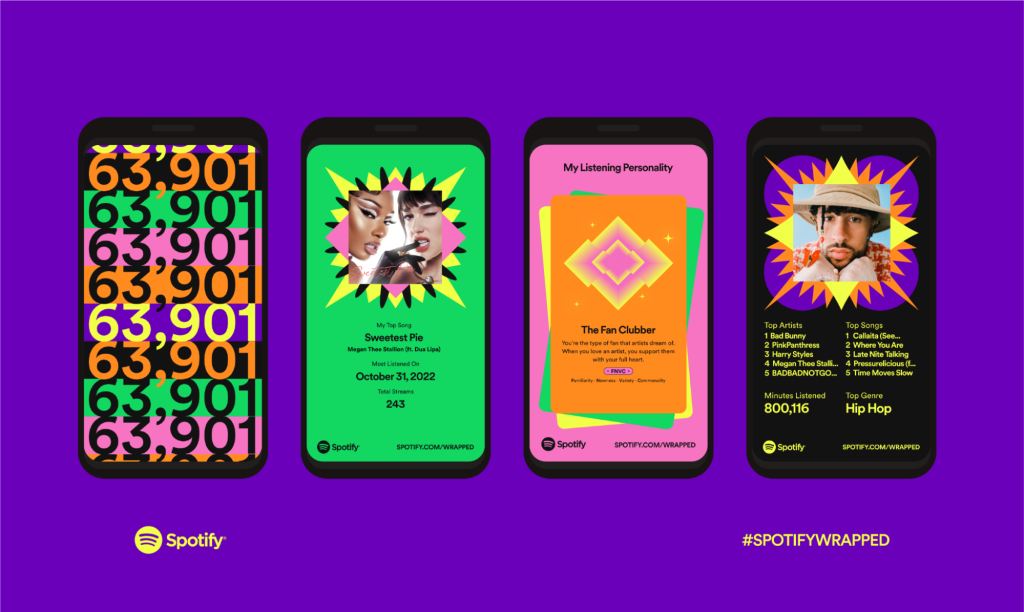
2. Fit Small Business ((Email newsletters)
The business takes the posts from its blog and makes them into email newsletters that are easy to read. There are a lot of them, and they all cover a different subject, like HR, sales, or marketing. For example, instead of sending out a long blog post about how to use social media for business, they might just share one useful tip and link to the whole thing for people who want to learn more. It’s a smart, people-centered way to help readers learn new things without making them feel like they have too much to do. It also strengthens the brand’s pillar pages, helps with a smart content strategy, and keeps people interested in the main site so they keep coming back for more.

3. SportClips(Case studies)
Brand J’s work with SportClips is a superb example of a case study that really works. The marketing business clearly outlines how it helped SportClips obtain more leads and open new stores in less than 450 words. The write-up is short, but it gets the point across really well. It outlines the particular tactics that were employed, why they were chosen, and how the results may be measured. The film that goes with it makes it even better by giving a human touch and making it easier to relate to the success story. This case shows how facts and stories can work together to establish trust and explain how things really function.
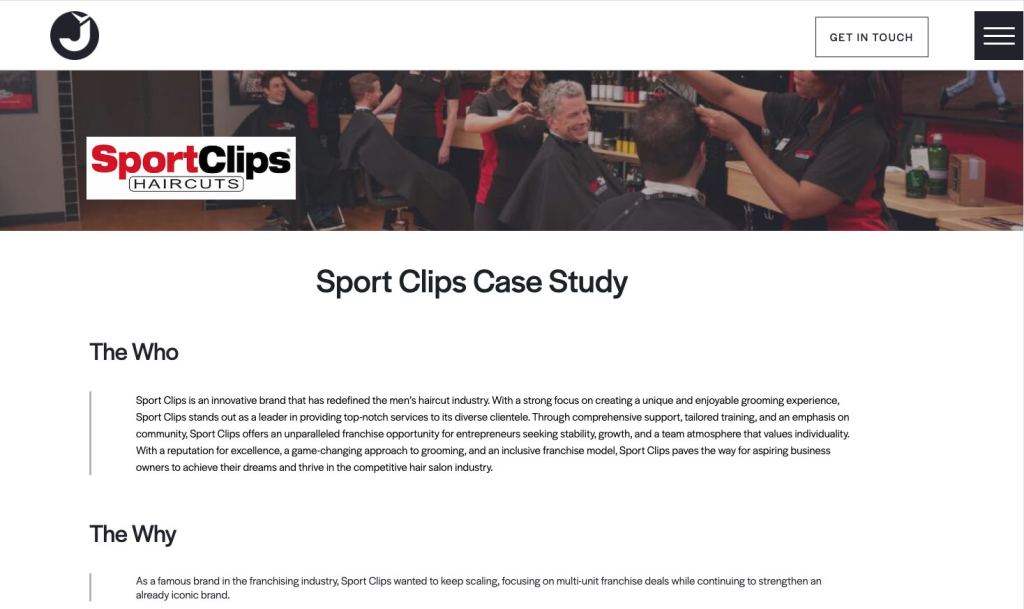
4. Hand Luggage Only (Guest posts)
Hand Luggage Only is a travel blog that uses guest posts quite well. The site can publish more content regularly without spending a lot of time or money by working with guest bloggers. Guest bloggers typically get paid very little or get backlinks in exchange for their efforts. This is a win-win arrangement that increases both the amount of content and the site’s SEO. This plan not only keeps the blog updates coming, but it also brings in new readers as long as the people who write for it are in the same niche or business.
5. iFixit’s (Mission-driven content marketing: all content (blogs, email newsletters, social media))
iFixit is a great example of content marketing that is based on a mission. Everything they do, from blog articles and email newsletters to community projects, is based on their brand slogan, “The right to repair.” The notion is straightforward to understand: everyone can improve their own tech. By telling this tale over and over, iFixit not only gets more visitors to their website, but they also get media attention and start conversations on social media. This is a great example of how a strong, purpose-driven story can help a business expand and win over its audience.

6. Hootsuite (A combination of explanatory and educational content)
Hootsuite is a terrific example of a firm that generates content that genuinely helps by answering inquiries from customers. They noticed that many of the visitors who came to their website were asking the same questions regarding their major products. Hootsuite ran surveys on-site to find out exactly what users wanted. This way, they could hear directly from users. The team then generated a lot of valuable information, such as thorough FAQs, in-depth descriptions of landing pages, and step-by-step guidance on how to use crucial features. Not only did this tailored strategy make their products easier to grasp, but it also worked, improving conversions by 16%. This is a good example of how listening to what your audience wants and translating their inquiries into useful content may help your business and your content marketing plan.
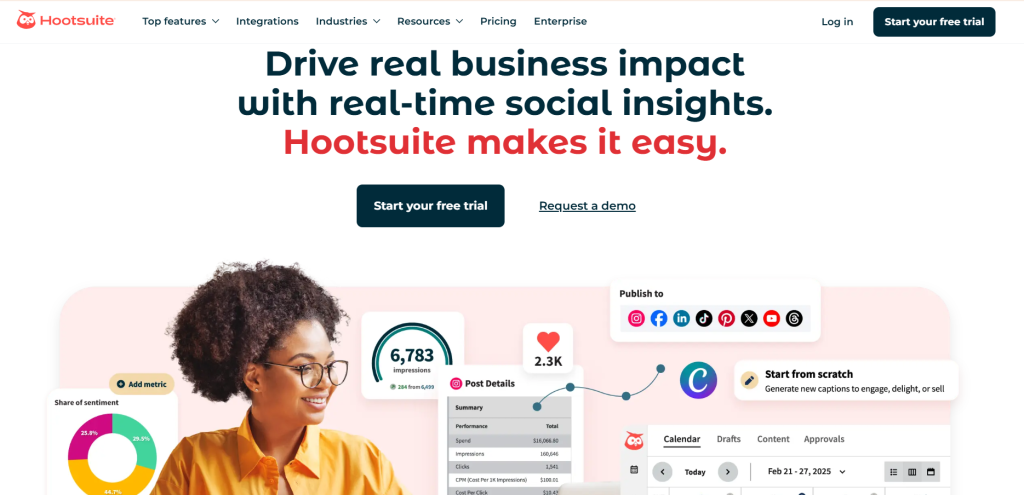
7. The Sill (Educational content)
The Sill, a company that sells indoor plants and gardening tools, came up with a clever and real way to connect with its fans on social media. The team didn’t just respond to comments when they saw that a lot of followers were asking for plant care advice. They listened, learned, and used those questions as inspiration.
The Sill used the information they got to make a series of simple, visually appealing Instagram posts full of useful care tips. Plant lovers quickly fell in love with these posts, tagging friends, saving the content, and joining the conversation. Because of this, The Sill became known as the place to go for advice on how to grow healthier, happier plants and strengthened its community.
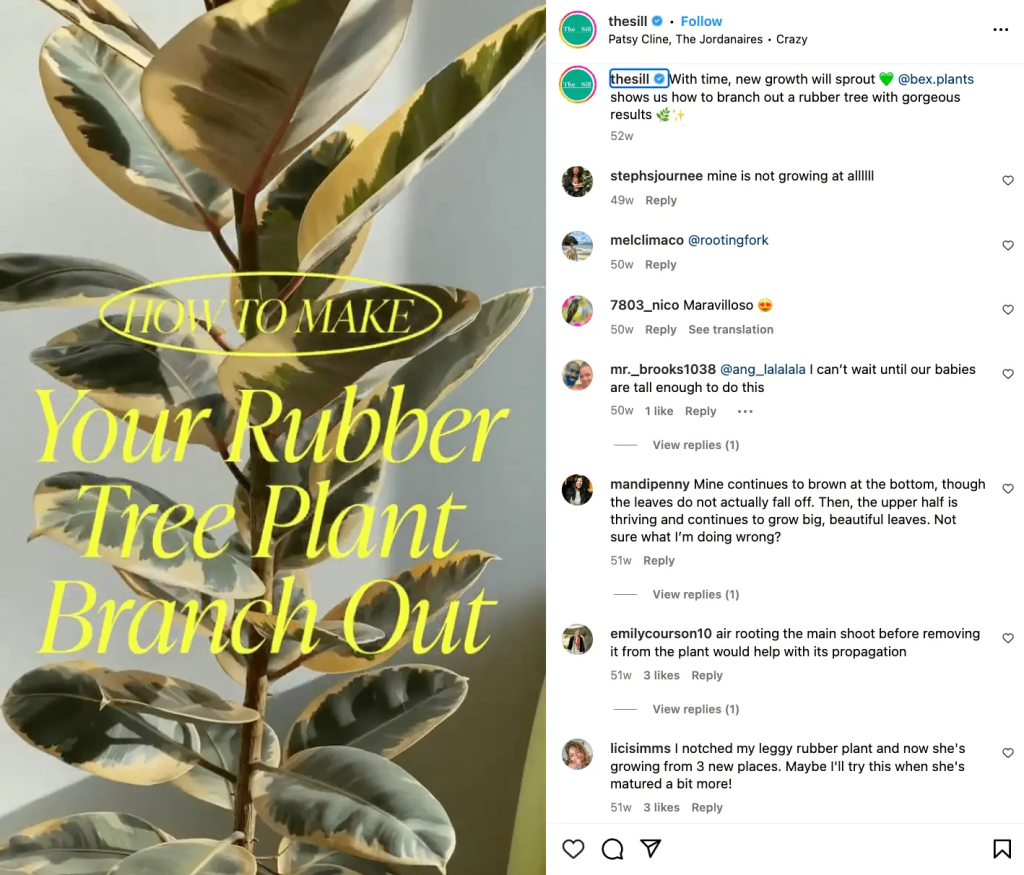
Last thoughts and what to do next
It’s not about how much business content you make; it’s about how you plan, connect, and follow through on your goals. Every piece of content you offer, from a customer experience to a how-to video to a quick comment on social media, may help people, inspire them, and gain their trust. Now is the time to put these plans into action. Make a plan for a blog post, a short video that explains something, or a collection of reviews that show how your brand really helps people. All of these are fantastic places to start. If you keep working hard and talking to others, your work will not only reach them, but it will also connect with them. This will help your business grow.
FAQ
What is business content, and how is it different from regular posts?
Pre-landers, case studies, checklists, emails, and videos are all types of business material that are meant to help you reach your goals and attract more customers. People often want to know what “business content” is. It’s not just publishing random things; it’s a deliberate approach based on things that can be measured, like leads, purchases, or signups. When creating an asset, you should always have defined goals, target audiences, and key performance indicators (KPIs) in mind. This makes sure that every piece of content helps the business grow and not just gets people to look at it.
What types of content marketing are most effective for businesses
When you’re trying to figure out the greatest sorts of content marketing, search for things that can be quantified. Blog posts are a terrific way to convince people to buy items and compare them. Videos help us understand difficult things. Statistics are used in infographics to illustrate proof. Email marketing warms up leads, while case studies or testimonials build trust. It all depends on what you want: clicks, leads, links, or direct sales.
How can I make content for my business step by step?
Follow these steps if you want to learn how to make content for your business: Find out what users want, make outlines, write content (like copy, pictures, or videos), check for compliance, publish it, use it in different formats (like shorts, infographics, and email), and keep track of performance metrics like conversion rate (CR), earnings per click (EPC), and return on investment (ROI). Refresh your greatest assets every three months to maintain obtaining the same results.
What is a business content strategy, and why do I need one?
A business content strategy is what keeps growth going all the time. It puts your business goals, audience insights, and topic clusters all on one main page. This plan links your content to every step of the funnel: SEO-driven discovery, educational consideration, and persuasive conversion. This ensures that every video or article you publish helps you achieve measurable goals, including increased sales, trust, and visibility.
What are some good business content samples that I can use right now?
You may utilize a bridge (pre-lander) site, a return on investment (ROI) or earnings per click (EPC) calculator, a three-step email warm-up series, a comparison guide, a YouTube video that explains everything, and a short case study with proof points. All of these instances should have a clear call to action (CTA) and a means to keep track of clicks, conversions, and the quality of leads.
How do subject clusters and a pillar page assist my business’s content in getting higher rankings?
You put many related things on one main page when you construct *topic clusters*. This strategy strengthens internal linking, provides your site with greater authority on the topic, and makes it easier for Google to understand how your site is set up. The result is that readers stay on the page longer and see more of it, as they progress from broad overviews to more specialized subtopics.
How can a small business create a content calendar that works?
A good content calendar can help you stay on track without getting too fatigued. Every week, plan to write one new post and two old ones that you may use again. Give people jobs, create deadlines, and approve CTAs ahead of time to help things run more smoothly. Check in every three months to add new information and keep a backlog sorted by funnel stage (awareness, interest, and conversion) to keep the work and impact in balance.
What sorts of content work best for marketing to businesses versus small businesses?
For B2B content marketing, focus on in-depth authority materials like whitepapers, webinars, case studies, and gated offers that help you create long-term relationships. Blogs, short films, and infographics are some of the best formats for small businesses because they are quick and fascinating. Local SEO, social proof, and simple lead magnets that quickly get people’s attention should also be significant.
How can I safely use social media and content made by other people to build my business?
When you develop business content for social media, make sure to share things that are relevant to each site, repeat important quotes or pictures from your blogs and videos again, and only use user-generated content (UGC) after gaining permission. Do not only direct folks to your homepage; always send them to pre-landers or lead pages. Keep track of hook retention, click-through rates (CTR), and assisted conversions to see how well you’re doing.
What numbers should I look at along the marketing funnel to see if my content is worth the money?
To get the most out of your marketing funnel, pay attention to top-of-funnel (TOFU) metrics like impressions, ranks, and backlinks; middle-of-funnel (MOFU) engagement metrics like time on page, scroll depth, and email signups; and bottom-of-funnel (BOFU) conversions like CR, EPC, and revenue. Choose attribution monitoring to figure out which content boosts conversions, and then choose formats that give you the most bang for your buck (ROI).
Review 1
Before I discovered structured business content, I used to “just post” without much thought. Switching to a real business content strategy completely changed the game. Now, every post starts with a TL;DR summary and a clear definition box, and each one aligns with a specific stage in the marketing funnel. I focused on five types of content marketing that match my time and budget — blog posts, short YouTube explainers, infographics, email sequences, and one solid, proof-based case study.
The biggest improvement came when I started using a pre-lander page before any paid campaign — it helps with compliance and conversion rates. I also learned to repurpose my materials: one guide turns into a social carousel, a short video, an email, and even an FAQ post. Every article links to a “how to choose” pillar so readers never hit a dead end. The results speak for themselves — better rankings, higher CTR, and more add-to-cart clicks. These are the business content examples I wish I’d known about years ago.
Review 2
As a B2B lead, I decided to stop guessing and start with a clear business content marketing plan. My team defined ICP pain points, then built content clusters around a single pillar page supported by how-tos, case studies, and comparison guides. This approach to content marketing for B2B works best when you respect how real buying committees make decisions. That’s why we added a gated whitepaper, webinar, and ROI calculator — each one tracked in the content calendar and refreshed quarterly.
I never skip key technical elements: schema markup (FAQPage, HowTo, ItemList), expert bylines, and proper citations for every claim. Each piece of content serves one clear goal — demo sign-up, trial, or email subscription — and we measure performance through CR and EPC instead of just traffic. After reworking our content hub, the pillar content ranked higher, assisted conversions increased, and even our sales team began referencing our pages on calls. A focused, metrics-driven content strategy always beats random posting.


0 Comments